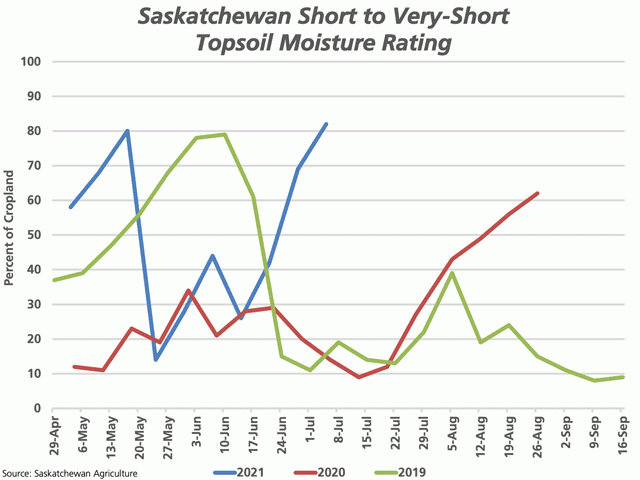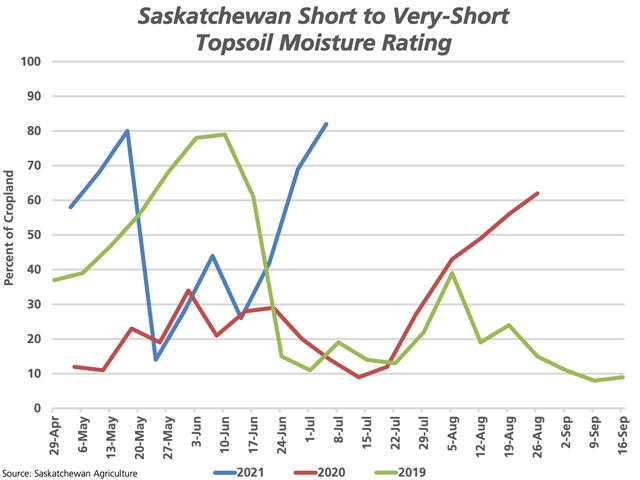Canada Markets
Extreme Prairie Heat Takes a toll on Saskatchewan Crops
The weekly Saskatchewan Crop Report shows limited precipitation in the week ending July 5, while scorching temperatures took a further toll on the province's crops and soil moisture levels.
This week's report shows most of the western one-half of the province reaching daytime highs of 37.1 Celsius or higher, while almost the entire province saw highs of 33.1 C or higher. Agriculture and Agri-Food Canada's maps show the highest temperatures reached being greater than 39 C.
As of July 5, cropland topsoil moisture is rated at 18% adequate, down from 31% last week and the lowest percentage reported this season, after reaching 20% on the week of May 17. The area rated short-to-very-short topsoil moisture grew from 69% to 82% of the province, the highest rating seen this year. This time last year, this rating was 82% adequate and 14% short-to-very-short, while on average, the short to very-short rating has averaged 22% for this week.
P[L1] D[0x0] M[300x250] OOP[F] ADUNIT[] T[]
When the six regions are compared, an estimated 37% of the Southeast Region is rated to have adequate topsoil moisture, which deteriorates to 10% for the Southwest Region and 8% for the West-Central Region.
AAFC's Percent of Normal Soil Moisture (Drought Model) chart as of July 5 shows the largest area of the province rated less than 40% of normal soil moisture, while the next-largest area is rated from 40% to 60% of normal.
A combination of a lack of moisture, high heat and high winds have taken a toll during the week, while heavy rains seen in the Southwestern Region of the province on the morning of July 8 may be of limited benefit due to the damage already done to the crop. Rainfall in other areas of the province may still prevent irreparable harm.
The government's crop stage data shows crops coming in fast. Spring cereals are estimated to be 40% headed, which compares to the five-year average of 24% for this week. An estimated 60% of the canola crop is flowering, up from the 42% average. An estimated 28% of the pulse crop is flowering and 38% is podding, which compares to the average of 50% and 2%, respectively.
This week's report included contact information for the Farm Stress Line for support when needed. This line is staffed 24/7 at 1-800-667-4442.
Cliff Jamieson can be reached at cliff.jamieson@dtn.com
Follow him on Twitter @Cliff Jamieson
(c) Copyright 2021 DTN, LLC. All rights reserved.






Comments
To comment, please Log In or Join our Community .